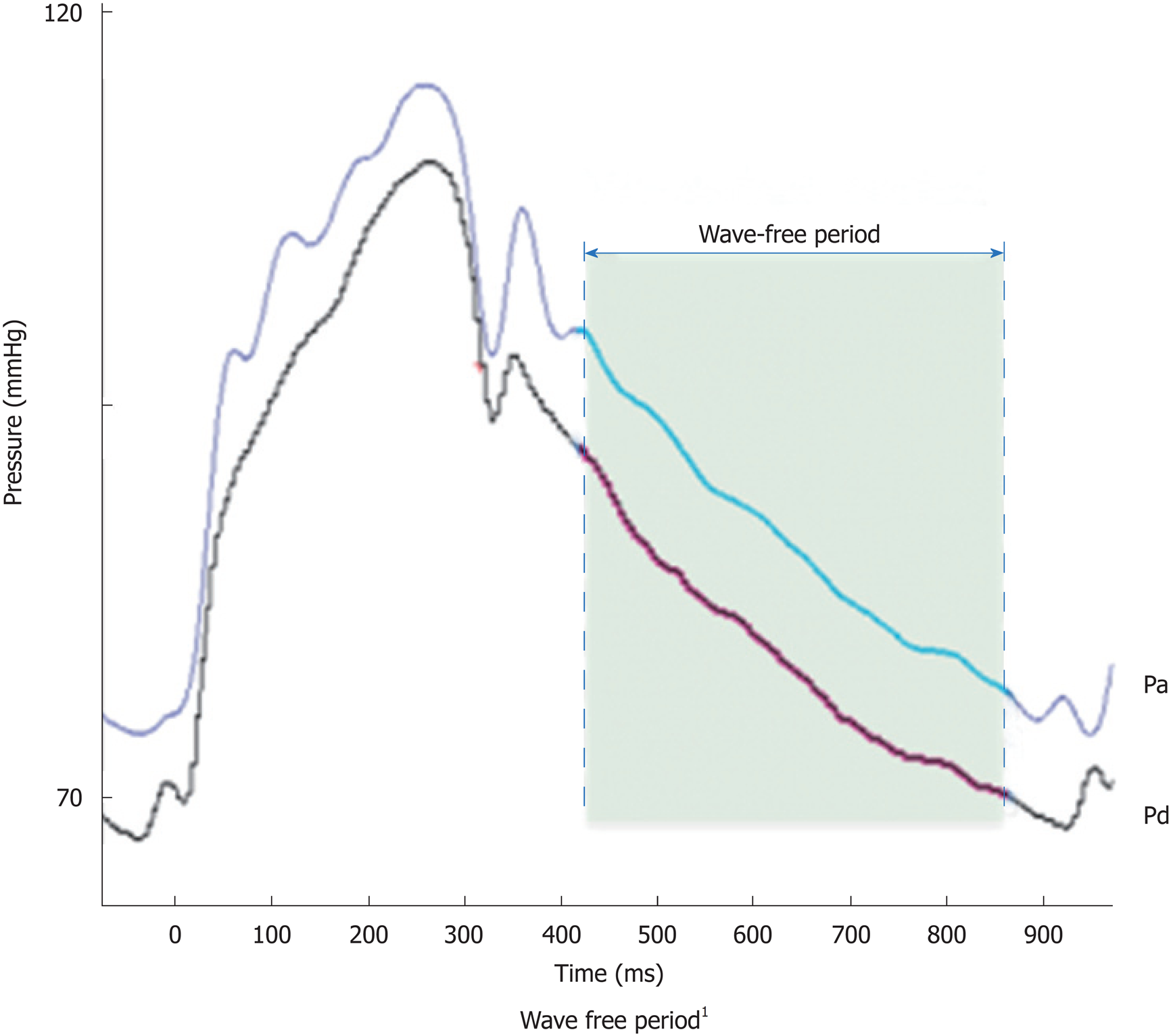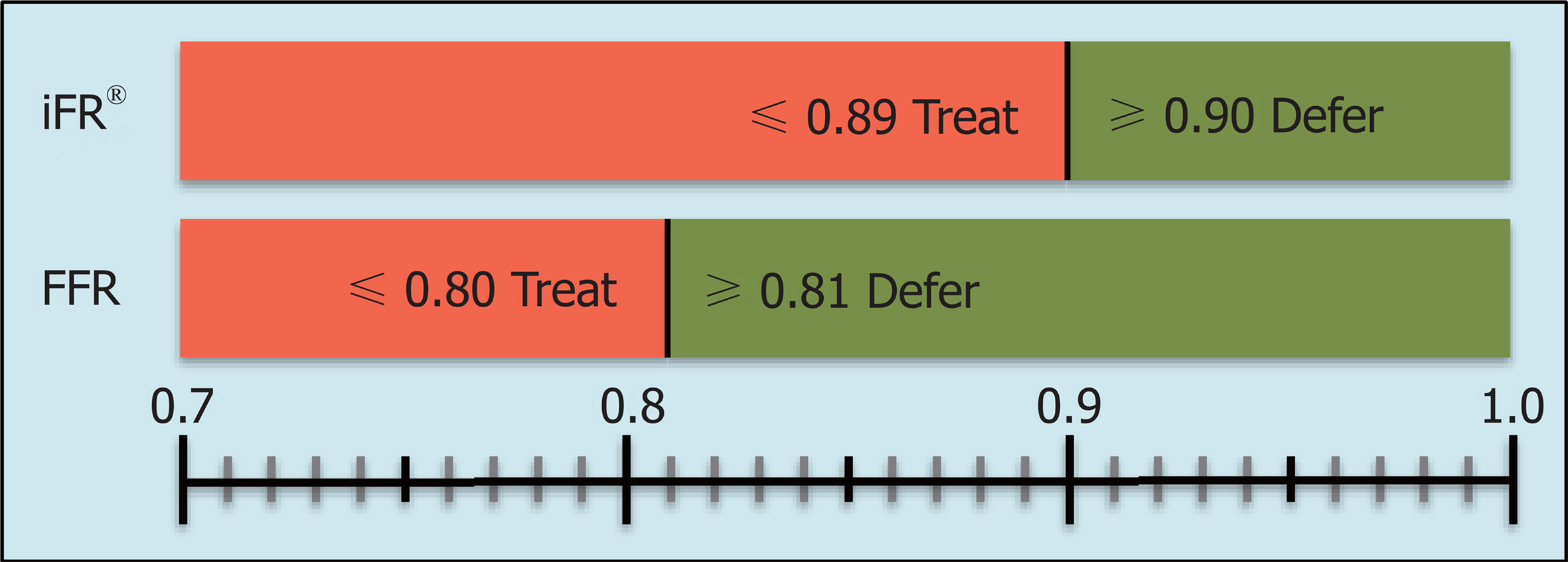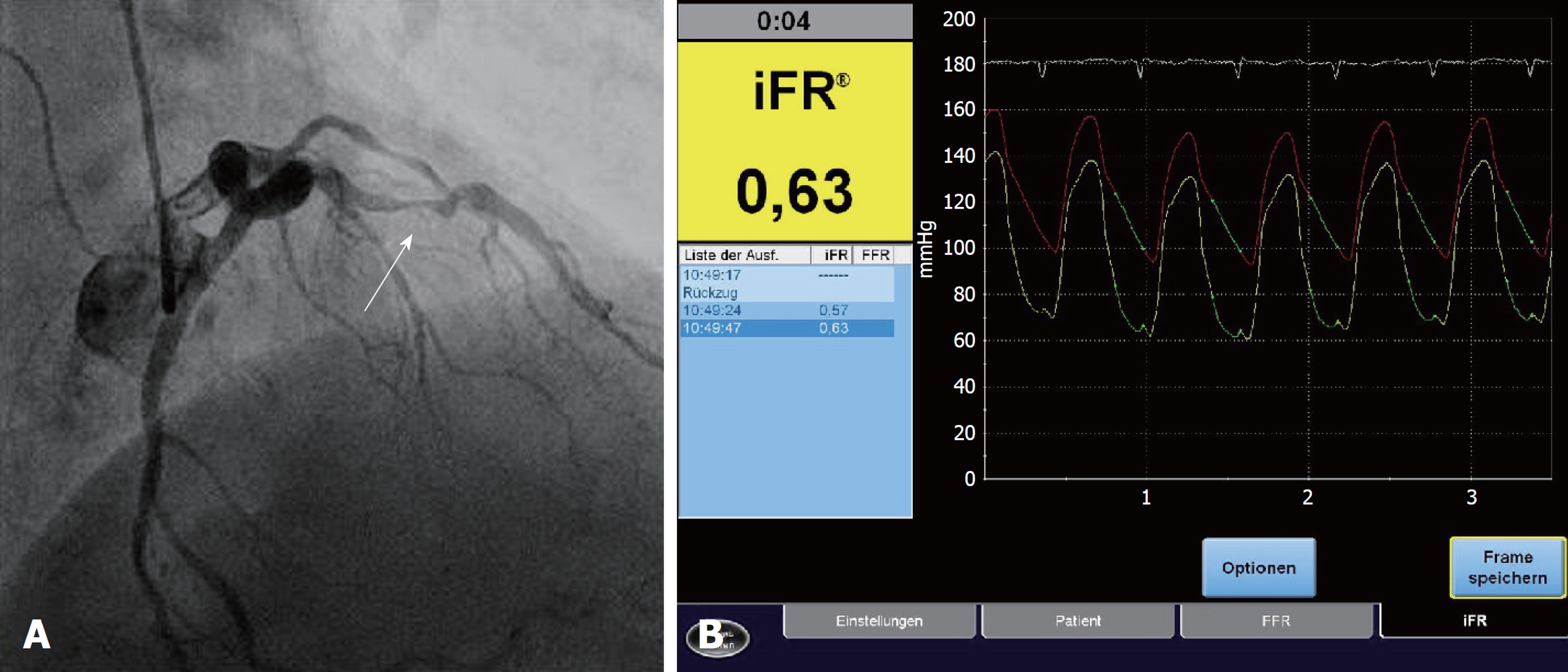Copyright
©The Author(s) 2018.
World J Cardiol. Dec 26, 2018; 10(12): 267-277
Published online Dec 26, 2018. doi: 10.4330/wjc.v10.i12.267
Published online Dec 26, 2018. doi: 10.4330/wjc.v10.i12.267
Figure 1 Proximal pressure and distal pressure during a wave-free period (grey shaded).
Courtesy of Volcano Corporation, Koninklijke Philips N.V. Amsterdam, The Netherlands. Pa: Proximal pressure; Pd: Distal pressure.
Figure 2 iFR® cut-off value and fractional flow reserve-measurement: An iFR®-value of ≤ 0.
89 indicates a hemodynamically significant stenosis (above, red bars), whereas an iFR®-value of ≥ 0.90 indicates no need for an intervention (green bar). Accordingly, FFR-indices of ≤ 0.80 lead to a revascularization, whereas FFR-indices of > 0.80 indicate a non-significant coronary stenosis. iFR®: Instantaneous wave-free ratio; FFR: Fractional flow reserve.
Figure 3 Case of a 69-year-old patient with symptoms of angina pectoris and a history of smoking (30 pack-years).
A: Coronary angiography shows an initial two-vessel disease with a significant stenosis of the proximal LAD before percutaneous coronary intervention; B: iFR®-measurement was performed in the proximal LAD (iFR® = 0.63; bolt). FFR: Fractional flow reserve; LAD: Left anterior descending artery; iFR®: Instantaneous wave-free ratio.
- Citation: Baumann S, Chandra L, Skarga E, Renker M, Borggrefe M, Akin I, Lossnitzer D. Instantaneous wave-free ratio (iFR®) to determine hemodynamically significant coronary stenosis: A comprehensive review. World J Cardiol 2018; 10(12): 267-277
- URL: https://www.wjgnet.com/1949-8462/full/v10/i12/267.htm
- DOI: https://dx.doi.org/10.4330/wjc.v10.i12.267











